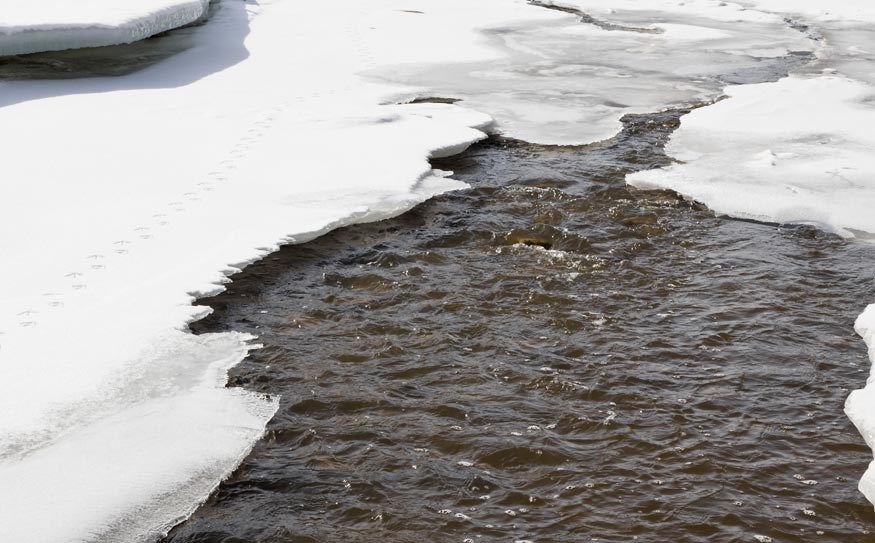When a report warning of global warming's disastrous impacts on skiing garnered national headlines in December, activists hoped the news would encourage a serious response both at home and in Washington, D.C. But the ski industry itself, where bad press means all the difference between a banner year and a bust, greeted the headlines with all the enthusiasm of a rainstorm on the slopes.
Industry leaders quickly jumped in to do damage control. Vail Resorts ran an ad in The New York Times under the banner, "The Climate HAS CHANGED," with photos of skiers and snowboarders wallowing in fresh powder at the company's playgrounds, which include Vail, Beaver Creek, Keystone and Breckenridge in Colorado, as well as three resorts around Lake Tahoe.
The company's CEO, Rob Katz, wrote a letter to the editor of the Denver Post berating those who "alarm people with images of melting snow." "Count me in the category of someone who is very worried about climate change," Katz wrote, and then added, "You can count me out of the group that says we need to address climate change to save skiing."
Save wildlife habitat and prevent natural disasters, sure, Katz intoned, but let's keep skiing out of this.
The reaction revealed an industry deeply torn between protecting its long-term survival and ensuring its short-term profitability. "Ski area owners and operators are aware of the scientific studies and projections regarding the long-term potential impacts of climate change," the National Ski Areas Association said in a position statement, "but we remain optimistic as an industry."
The forecast does not inspire confidence, however. The report that made headlines in December, Climate Impacts on the Winter Tourism Economy in the United States, provided a long list of alarming reminders: By the end of the century, winter temperatures are projected to warm an additional four to 10 degrees Fahrenheit in North America. In high-emissions scenarios, the winter snowpack in the Cascades and the Sierra is projected to decrease between 40 and 70 per cent by 2050. If we continue to pollute the way we do now, skiing will be confined to the top quarter of Aspen Mountain in average years by the end of the century. Utah's Park City Mountain Resort will have no snowpack whatsoever.
The report then attempted to put a price tag on all this, calculating that, over the course of the last decade, ski areas lost more than $1 billion in potential revenue to bad snow years. Failure to respond quickly to climate change, the authors wrote, "spells economic devastation for a winter sports industry deeply dependent upon predictable, heavy snowfall."
Commissioned by the nonprofit Protect Our Winters (POW for short) and the Natural Resources Defense Council, the report was part of a broader effort to highlight the economic significance of outdoor recreation, and to use that as a lever to promote conservation. But the ski industry has been reluctant to talk about this looming catastrophe, even for the sake of prolonging its own life.
"It's a tough reality to swallow," says Elizabeth Burakowski, a Ph.D. candidate in snow science at the University of New Hampshire and one of the report's co-authors. "It's bad for business."
The National Ski Areas Association does have a program called the Climate Challenge that encourages resorts to reduce greenhouse gas emissions — though it says nothing about all the emissions spewed when skiers travel to the resorts — and it has advocated for clean energy programs on the national level. And many individual resorts, including Vail, have cleaned up their operations by shifting to renewables like wind power. But when it comes to the larger fight against climate change, most industry leaders say they have enough to worry about already.
Nationally, the number of visits to ski resorts has remained essentially flat since the industry started keeping track in 1979. Analysts blame younger people, who aren't replacing aging Baby Boomers, the ski industry's main market. And now comes the news that snowboarding, a sport largely credited for saving the industry in the 1990s, is on a steep downhill slide. A report released this winter by RRC Associates, a company that tracks winter recreation, found that the percentage of snowboarding visits to ski areas has declined over the past two years, while the number of days boarders head to the mountain has dropped sharply in the past decade.
At Mammoth Mountain, environmental affairs director Ron Cohen says he's got his hands full just keeping up with Forest Service and state regulations. The ski area, he says, simply lacks the resources to be more active on climate change. "Everybody knows — people who work here and think about strategy — we're not ignorant of the issue," Cohen says. "We know that there are these discussions, these issues, scientific theories, facts — all of the above — but we're focused on business strategy a lot more than we are on something we have a lot less control over."




